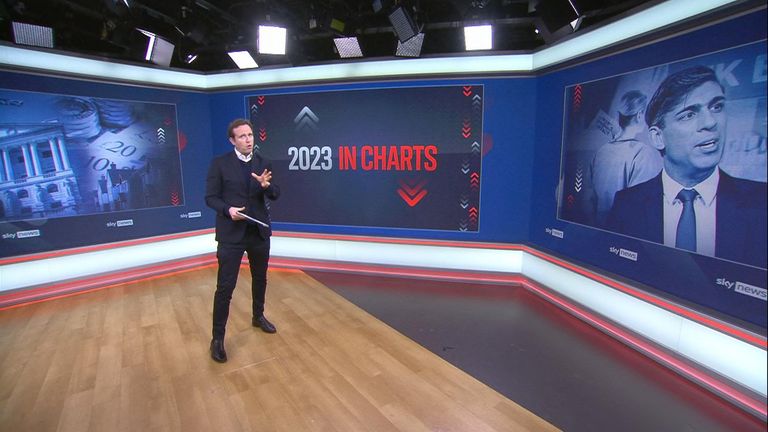The conversation about rate cuts has now officially begun.
For months, even as the market began to bet that the Bank of England would soon begin reducing the cost of borrowing, those in Threadneedle Street were adamant that the time for such conversations had not yet come.
In the minutes alongside each of its decisions, the Bank dropped heavy hints that it was just as, if not more, likely that the next move in interest rates would be up rather than down.
Money latest – reaction to Bank of England decision
Now, everything has changed. Today we learnt that one of the nine members of the Monetary Policy Committee (MPC) voted for a quarter point reduction in interest rates this month.
In the event, the member, Swati Dhingra, was outvoted by her fellow rate-setters, most of whom wanted to leave borrowing costs at 5.25%. Indeed, at the same meeting two members voted for higher rates.
Even so, this feels like one of those watershed moments – the beginning of a conversation which is increasingly likely to end in action, with Britain’s official borrowing costs being cut, perhaps within a few months.
To see why it’s helpful to consider the Kremlinology whereby the Bank drops hints about its future plans.
While in public the governor rarely, if ever, says baldly what they plan to do with interest rates in the coming months, there are a few ways in which he signals which way they’re inclined to go.
One of them is the phraseology of the minutes, released alongside each decision.
In previous minutes, the Bank had included a telling phrase: “Further tightening in monetary policy would be required if there were evidence of more persistent inflationary pressures.” The point had been that while many had come to assume that 5.25% would be the peak for interest rates, another rise was even more likely than a cut.
That phrase has been removed from the latest set of minutes, replaced with the more neutral phrase, that “the committee will keep under review for how long Bank Rate should be maintained at its current level.”
Another signal comes via the so-called “fan charts” the Bank provides of where it expects inflation to go in the coming years. There are two versions of these charts: one which shows where inflation will go if interest rates are left on hold at their current level, and another version which shows where inflation will go if interest rates follow market expectations.
Here, too, there is a clear hint. The chart based on constant interest rates shows a very sharp fall in inflation to well below the Bank’s 2% target. The accompanying chart showing the impact on gross domestic product – the best measure of economic growth – paints the picture of a deep recession.
On both of these bases, leaving rates on hold indefinitely would clearly be a mistake.
But of course, investors are betting that rates won’t stay unchanged; they reckon the Bank will begin to cut them this summer, taking them down from 5.25% to just above 3% in the next few years.
Look at the second set of Bank inflation charts, which follow the thought experiment that the Bank indeed does what markets expect, and you see that far from dropping well below target, inflation hits 2% briefly this year (in part a statistical effect because of how volatile energy prices have been in the past year), rises again, but then eventually comes back to settle at around 2% by the end of 2026.
In short, it’s pretty much bang on target.
Most investors will look at all of this evidence and come to the conclusion that the Bank is not pushing back on their expectations, for rates falling in the middle of the year and then continuing to fall in the coming years.

